August 2011
One if by Bird, Two if by Fish
We have fun with currency in Croatia
The Croatian currency is the Kuna, one of which is worth about twenty cents. There is a bird on the one-Kuna coin, and a fish on the two-Kuna coin. In our family they are known as the Kuna bird and the Kuna fish. Nuf said? (Oh, and there’s a bear on the five-Kuna coin, if you care, but who ever heard of a Kuna bear.)
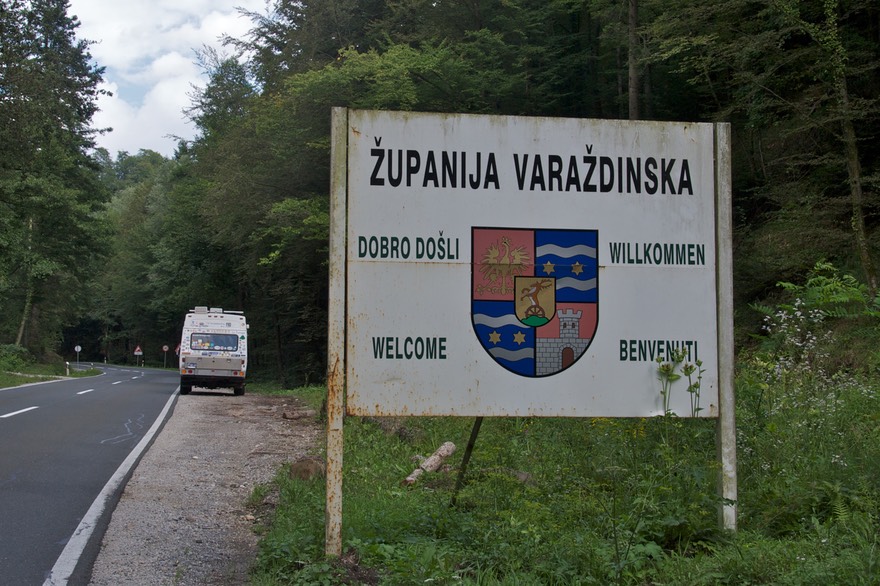
Overall, our adventures in Croatia are being divided into two sections: the inland, eastern area now, and the western, coastal areas, in the early fall, after the Invasion of the Body Bakers has returned home, crispy and brown. Picture Croatia as a sloppy boomerang, with the lovely Dalmatian coast along the left side and the inland areas going off to the right. Most folks spend all their time on the coast; we now have a better understanding of why this is, but lest you think our experiences have been negative, there have been some very nice moments.
At the border, we were concerned because we were leaving the European Union, and all that Schengen stuff might reach up to bite us. Never happened. They stamped us out of Slovenia, and then a few yards on, Croatia waved us on in, not even bothering to stamp our passports. So, all my worries were for naught – the best kind.
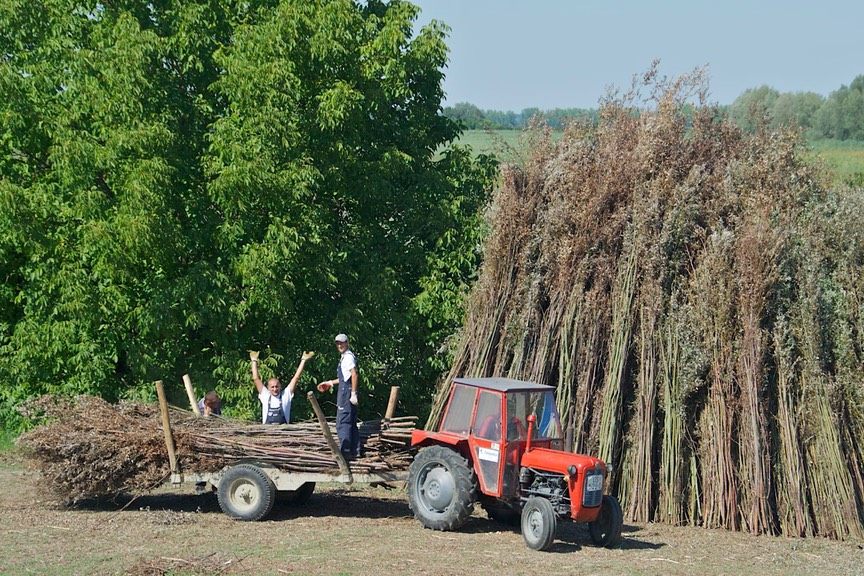
Immediately we started dealing with all the adjustments that need to be made in a new country – adjustments that we had become accustomed to in Central and South America, but are unnecessary in the EU. The last time we’d dealt with these issues was when we entered Morocco.
Money was an issue right away, because we had used a “country” border crossing and there was no town to hand. Our first adventure was supposed to be a visit to a very famous, lovely castle; but when we arrived, the attendant immediately wanted a Kuna to let us park, and we had nothing to give her. So I convinced her we would only stay but a moment, we jumped out and got a gander (and a couple of pics) of the objet d’art at hand, and we sped off, with a wave and a thank you.
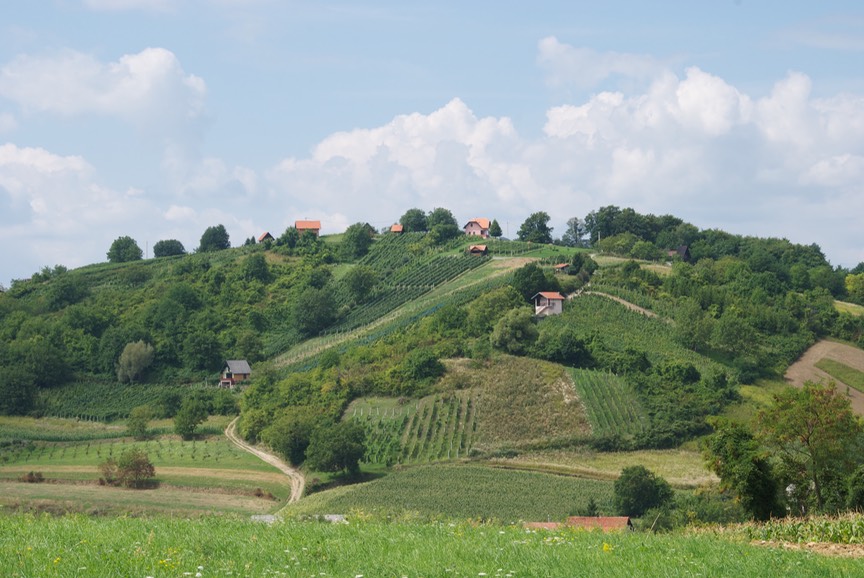
We stopped in the first town large enough to have banks (and ATMs) and got local luchre. It takes a few days before you can figure out exactly how much it’s worth, but eventually you sort that out. Only then can you determine how much fuel is costing. (About the same here as in Slovenia, and significantly cheaper than in Italy.) If you’re wondering how we find out the current exchange rate, we check it on line of course, so as to have some idea of what to expect, but for the final figure, we get that on our bank transaction listings, which we also access on line. Until then we can only be approximate.
We were pleased to find out not much was different from Slovenia (and much of Europe). Water is available at the fuel stations. The word for propane is Auto Plin, and lots of the fuel stations have it. We were able to identify the new style of recycling bins, but noticed immediately that they were few and far between, disappointingly. Many of the supermarkets were carry-overs from other countries, so they were easy to spot. And…most of my current food favorites were still available. (But still no cheddar cheese, truly life on the edge.)
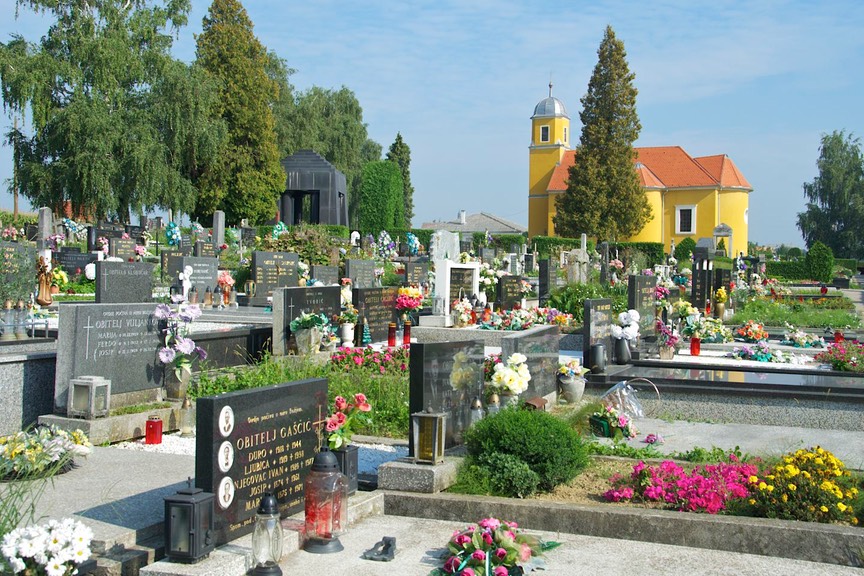
So, within a few days we were feeling comfy again. And off we went to see the world – of quiet, rural, inland Croatia. Since we had merely crossed a river, and then a border, we weren’t expecting big differences. But they were evident. Slovenia is like a mown lawn, while Croatia is a bit unkempt. There are more weeds in the planted fields, and many more open areas with just weeds. More surprising, the cemeteries were not very well tended. We knew that Croatians were religious, and we had expected the graveyards to reflect their commitment to the memory of those who have died. They didn’t look abandoned, just not loved. Every tiny town, by the way, had a huge cemetery. On a happier note, there are soccer fields everywhere, and they are being well tended; noticeably the best looking real estate in every town.
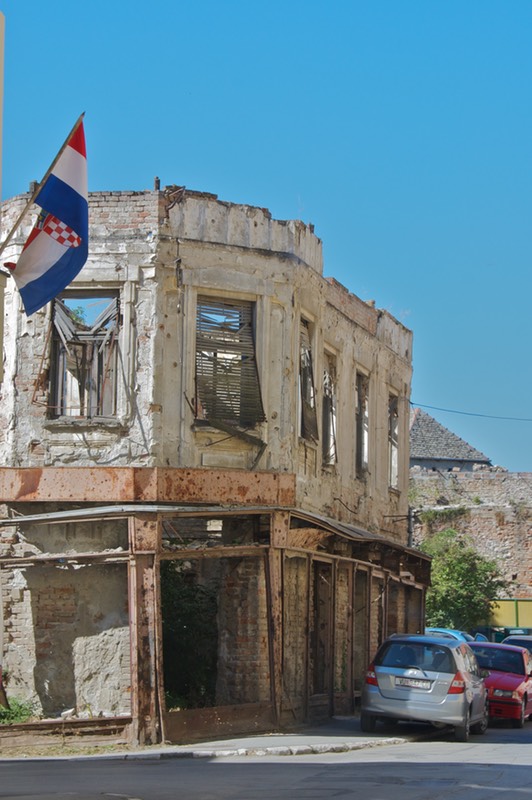
The apparent health of the economy varies from one region to another. Lots of Croatia suffered horribly during the war (1991-95), and in some areas their entire industrial base was destroyed and still has not recovered. Of the people who fled, many still have not returned. The dead, of course, are irreplaceable. In many areas we saw burned out and destroyed houses and town buildings; bullet holes were everywhere. In some spots there wasn’t a lot going on and at times the whole village seemed to be sitting at the side of the road, watching the world go by.
Many other regions are recovering nicely. We had entered the country in a nice area and almost right away found ourselves in lovely Varaždin (more below). But soon after that we entered something of a “bad patch”, as they say. It was a bit discouraging. But as we moved further east, we began to see more houses with fresh paint and pretty gardens, and fewer ruins. More newer cars (a very high percentage of them are red, oddly enough), rather than the 15-20 year-old vehicles that had been the constant earlier on. And some satellite dishes, although not in nearly the same numbers we’ve been accustomed to. All signs of more money. As we continued on we went back and forth between better and poorer areas. We were seeing a combination of new housing, deserted and decrepit housing, decrepit but occupied housing, and partly refurbished but unfinished housing; this patchwork was spread out across the countryside. As in Slovenia, the new homes seem to be universally built of a mixture of concrete block and fairly rough looking red brick, a structure that is intended to be covered by a layer of attractive stucco. In Slovenia we’d see the occasional home that had not yet received this final coating, but in Croatia such homes are numerous, with many appearing to be not all that new.
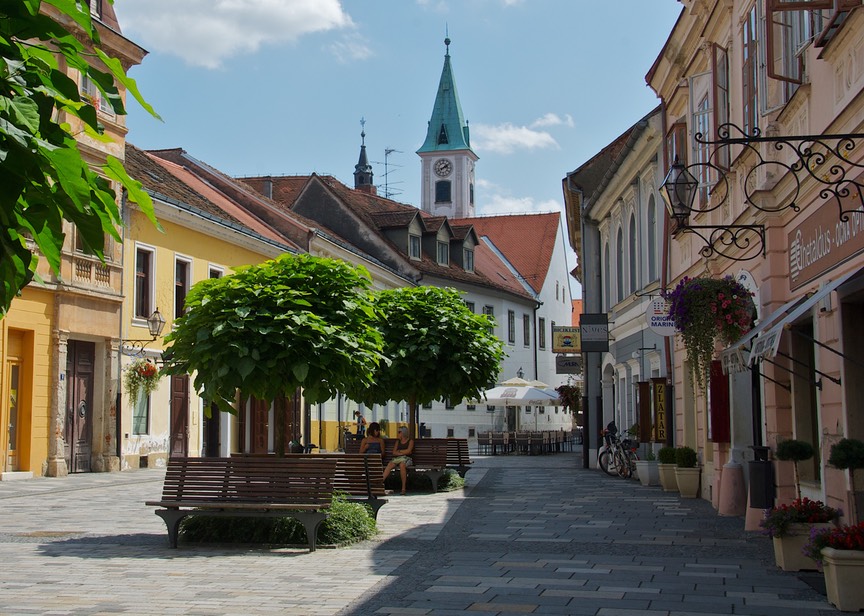
Our guidebook had warned us that attractions were “thin on the ground.” True. Varaždin was a real exception, however, and a pleasant surprise. It’s a pretty town with a strong Baroque heritage, thanks to the Hapsburgs, and it has a very strong economy, along with a delightful sense of itself. We made friends with the tourist office, where we were showered with beautiful brochures on both Varaždin itself, and Croatia at large (along with sachets of lavender from an island off the Dalmatian coast!). Flowers were hanging in baskets everywhere, there was a local castle and several churches and fun buildings to be explored. A bit later this August, there will be a huge annual world music festival that is attended by about 300,000 happy folks; it has been a tradition for many years, and apparently is a terrific event. All signs of a healthy, vibrant community.
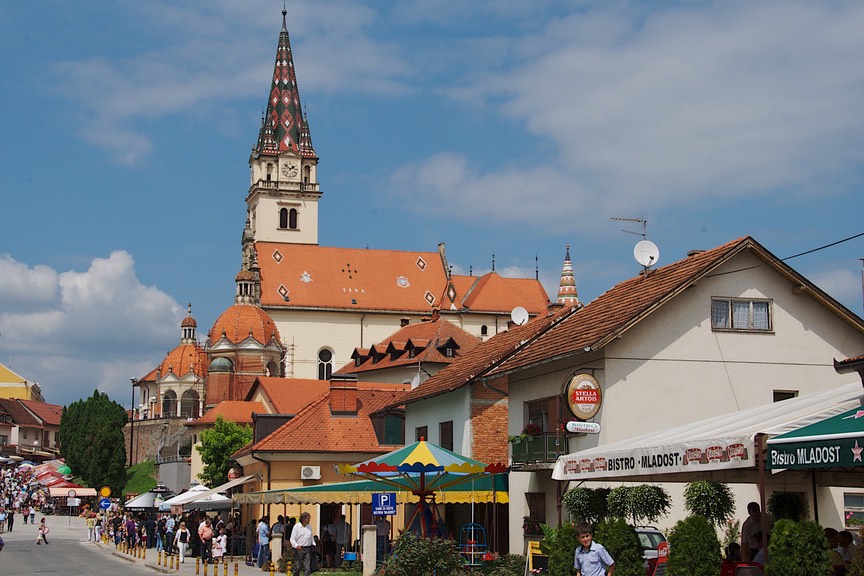
We had decided to skip Zagreb, the capital, as we hadn’t found good reasons to go there. But nearby was another happy town, Marija Bistrica. It has a rather famous pilgrimage basilica, and we had a terrific experience there. We arrived on August 5, not knowing that this was Our Lady of the Snows Day. (A long story, having to do with miracles. You can look it up.) There were gobs of people everywhere. It was a gentle, muted carnival atmosphere, with food booths and souvenir stalls, toys and games, and ice cream at every turn – at 89 degrees you had to eat it quickly. For most folks it seemed more like a great day out with the family rather than a religious event, although there were many folks circulating through the church, including a few moving up the aisles on their knees, and people in wheelchairs being pushed forward as well.
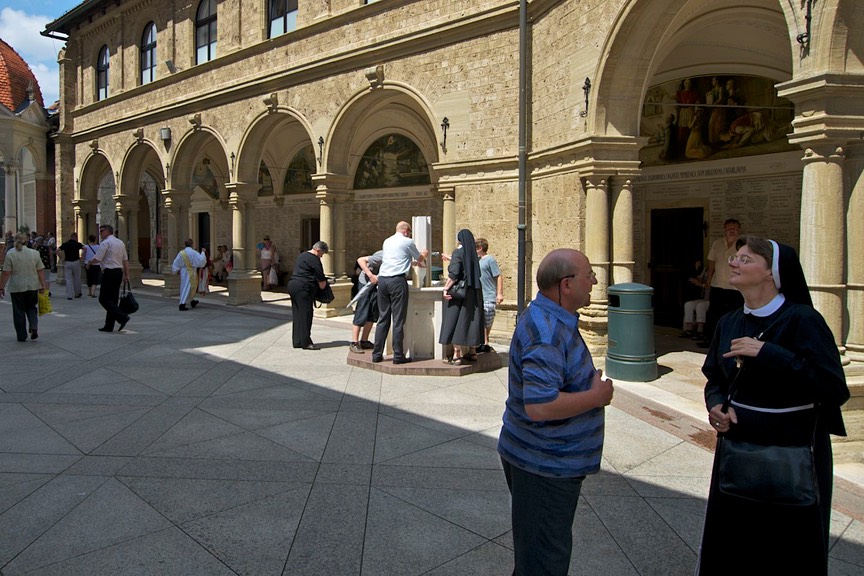
The entire community was involved in one way or another. We found parking in the back yard of a young couple who, like everyone else in town, was providing space for a small fee. There was a bit of confusion about the price, because he didn’t speak any English and I couldn’t figure out what he was trying to tell me. I’m afraid he’d decided I thought he was trying to gyp me. But someone came to the rescue with some English and we ended up with a handshake and happy smiles all around. We had lunch at one of the smaller booths, and chatted with the waitress. Her day job was in a salon, doing nails, but she was helping her husband, who ran the grill. It looked just like the county fair back home. The food was yummy and inexpensive. The beer and coke were the same price, and cost relatively more than the food! The town seemed pleased to have us there, and it was fun. August 15th is Assumption Day, and they’ll go through all this again, with much bigger crowds.
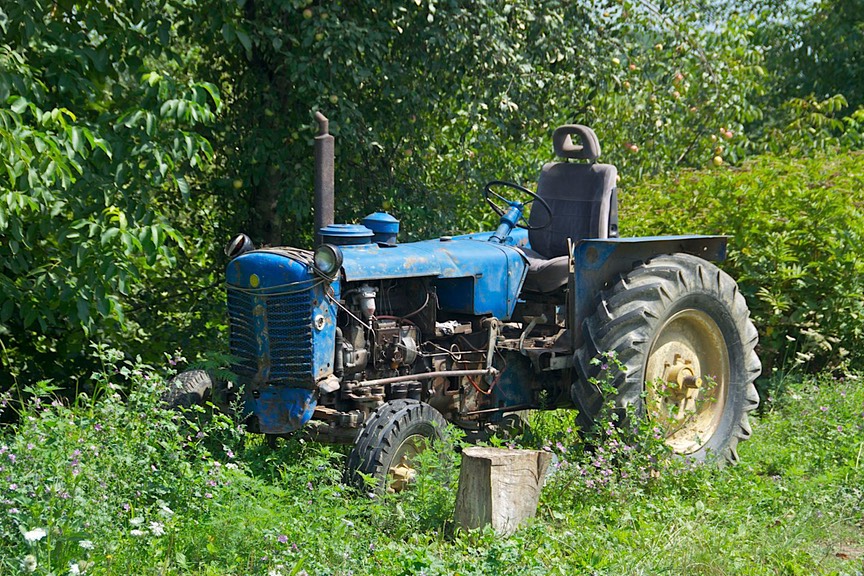
Back out in the countryside, we were in a lowland area, headed for the wetlands at Lonjsko Polje, home of white storks among other things. There were pears on the trees and at roadside stands, along with peaches and tomatoes. The farm equipment was well used, most of it Russian-era we were sure. We noticed that the wood stacked in front of most houses (just arrived and ready to season before being used) was much, much larger than we’d seen in Slovenia. Later on we saw the saw-guy. He had a huge cutoff saw loaded onto his tractor and was making the rounds, doing his bit. We knew he had to be out there; Croatian fireplaces cannot be that much bigger than ones in other countries.
But you ask about the wetlands. Well, not all that fascinating. We have seen better since, and it was really hot. So wait a bit. However, there was a special reason for visiting the area, in addition to the birds, etc. Famous old wooden houses, pretty run-down by now, but very different. They line the levy banks; we took pictures.
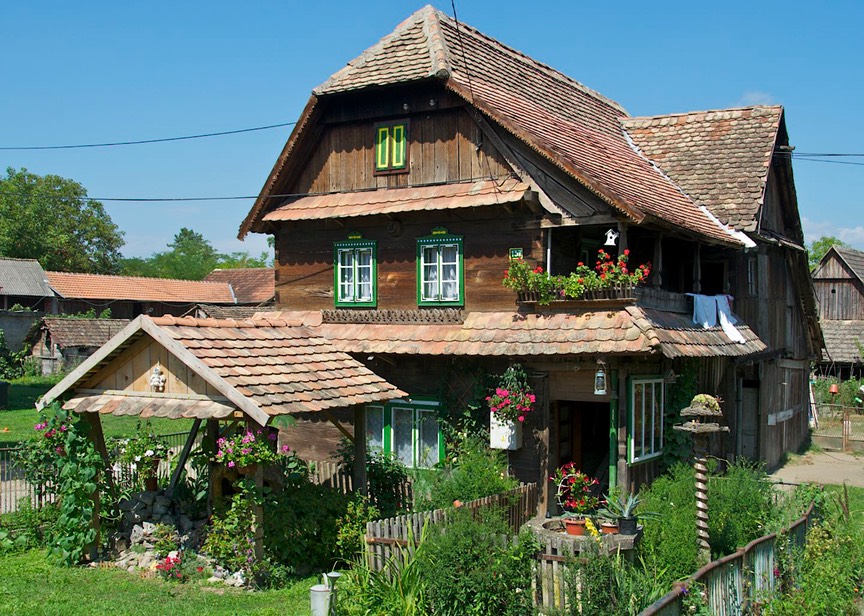
Hopping off the very lousy road through the wetland area, we popped up to Kutina, which was supposed to have a very nice church. Arriving, we noted that it was the Our Lady of the Snows Church; hmmm. But it was quite plain on the outside (true through most of this area) and firmly locked up, with no one around to aid our cause. And very hot; in the 90s and muggy. We bought some ice cream at the supermarket instead.
Searching for a bit of cooler air, we saw on the map that the highest elevation around was in the Papuk hills, where the peak reached around 3000 feet, so we headed in that direction. On our way we passed through the town of Pakrac. Badly damaged during the war, it remains so, and recovery is negligible in the areas we saw. Many abandoned homes stand along the road. To digress for a moment, we only knew of this town because it was mentioned in the narrative of a couple’s journey made in 2008. Theirs is the only motorhome trip we’ve been able to find that has gone through the inland part of Croatia. They describe Pakrac at the time they passed through, and sadly we found it no different now, 3 years later.
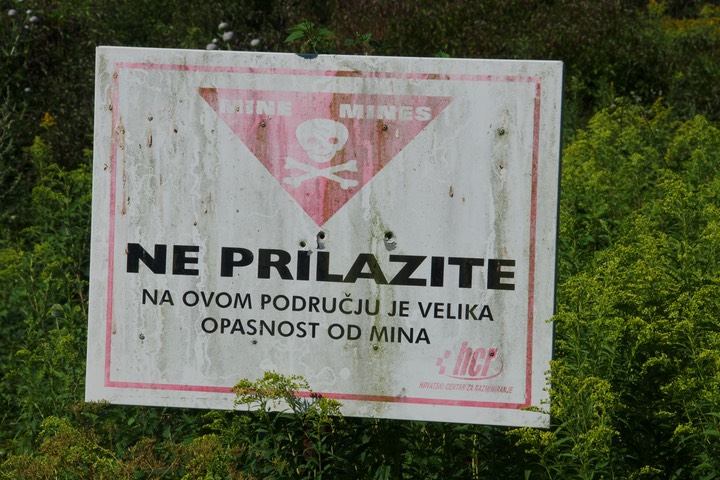
They also describe moving on a little further east, and running into crews clearing mines. Not to beat you over the head with this, but that was in 2008; they are still clearing those mines in that same area. Indescribably savage and brutal warfare.
Beyond the mine-clearing area (they had traffic stopped in both directions and were letting people through once every hour – this on a Sunday morning) we did climb into the hills; we found a cool and lovely clearing where we settled in for a day and a night on the edge of the lovely Prirode Papuk Nature Park. We had been blessed not only by higher elevation, but by a promised thunderstorm that swept through and temporarily cooled things down a bit. We were grateful for the respite. Oddly, most of the park was closed, apparently for the weekend. Gates to some areas were open on Monday, when we passed by on our way back down onto the flats.
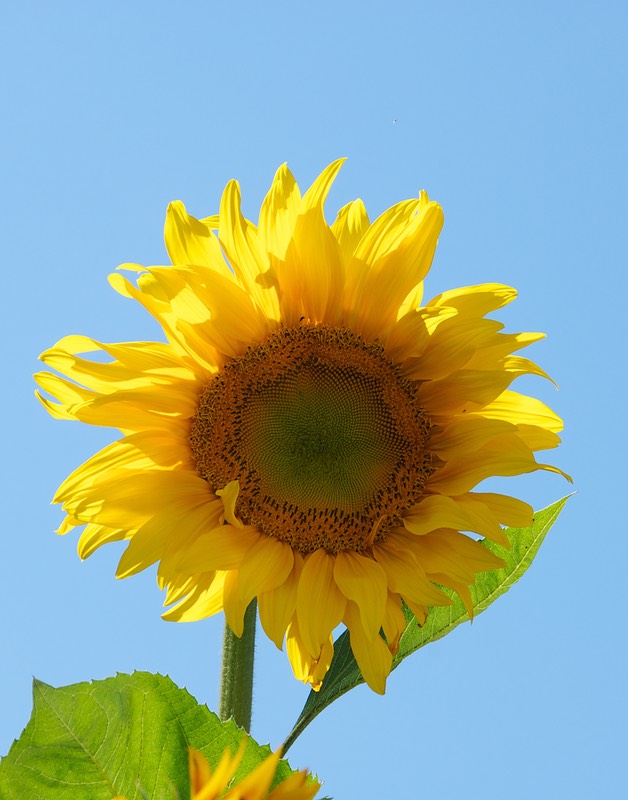
We saw a few motorcycles enjoying the roads through the hilly area, but not as many as would have been out in Italy or France or Slovenia; maybe we’ll see bunches of them in the coastal areas. Also, we’ve seen far fewer cyclists here; probably they also hang out on the coast.
Corn is king here in the east, along with hay. But sunflowers have now shown up, and some tobacco. Melons are ripe in the fields, and you can buy a lovely watermelon along the roadside – only 5 Kunas – less than a buck. The towns are one-street villages spread along the road; the backs of the houses face out onto the fields.
We ended up in Osijek; when we arrived it was 95 degrees, so we did what any red-blooded American would do – we went to the mall. First we’d seen in a long time. Nice and cool, a popcorn movie to see, and pizza, inexpensive if not overly interesting. We hung around for a long, long afternoon. And then came out at about eight o’clock and headed for the Kopački Rit Nature Reserve, about 5 miles outside town.
Kopački Rit is a very nice wetlands reserve with bunches of herons and spoonbills, along with a zillion little green frogs and very pretty snails (now there’s an oxymoron, you’ll mutter) to mention just a few of the delights available. It was lovely, and the nice folks didn’t mind if we spent the night in their lot. Best of all, during the night it rained, and the weather broke. We can expect very nice weather for the next several days. Mahvelous, dahling.
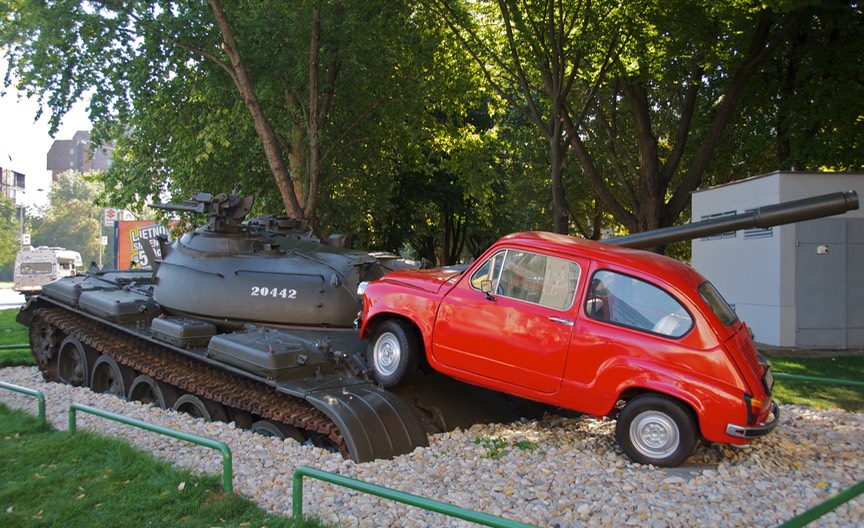
We visited Osijek, and found that this formerly very prosperous city was still working on its comeback. But it is an interesting town. Perhaps the coolest thing we saw, though, was an installation very recently erected on a busy street corner in the heart of town. It shows an old red Fiat in a standoff with a Serbian tank. I’m not going to tell you the story. You’ll just have to go to the photo page below to see the rest of the pictures. It was incredibly splendid! A really meaningful monument to an important moment in local history.
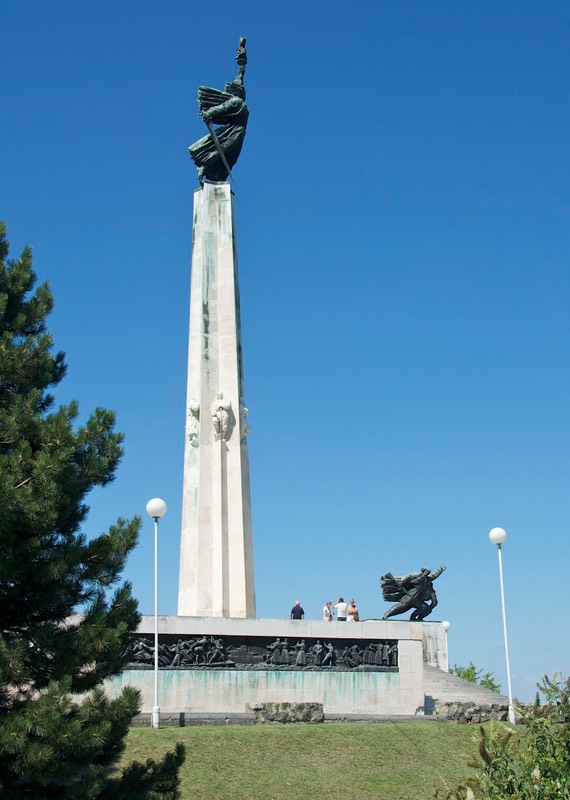
Before we left the Osijek area, we took a day trip into the Banska Kosa region to see a huge Communist-era statue in Batina. Now Batina is right on the border with Hungary, and the Danube River marks the edge of the country. This monument stands looking out over the water. It is there to mark where the Russians crossed the river in 1944, at great cost on both sides, to liberate the area from the occupying Italians. It’s quite something.
By now we’d decided to cross into Bosnia i Hercegovina for our next change of countries. Our other choices were Hungary or Serbia. Both are low countries, whereas Bosnia has lots of mountains. After all, they had the winter Olympics in Sarajevo, right?
But first we wanted to make two more stops in Croatia. We visited Vukovar, one of the most devastated cities from the recent war. Still has badly torn up and destroyed areas; so very sad. We noticed there was a memorial not mentioned in our book, which simply meant that it was rather new. We followed the signs, and found ourselves at the army base. They were happy to have us visit, but wouldn’t let us go into the building where the actual memorial information was, because no one was allowed in without accompaniment, and there was nobody of sufficient status around who spoke English – as senior officers, they were off on vacation. But we were free to walk around the outside, which we did, visiting tanks and rocket launching devices, etc. There was an old, old graveyard on the property that we enjoyed checking out. Then we went on.
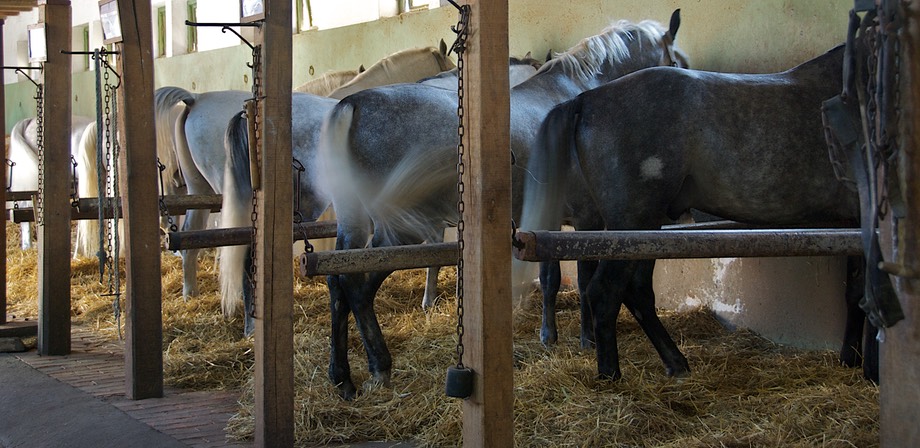
Our last stop was in Đakovo, a small town who’s main claim (for us, anyway) was the Ergela Lippizaner stud farm. We were able to wander at will and had a fun time rubbing noses with the big guys. The moms and babies were at another location. We could have gone to see them, too, but our problem was that, just as when we first entered the country, now that we were about to leave we were again out of money. Not knowing there was an entrance fee, we had used all our money for fuel, and were heading for the border. This is always a problem when you are moving between countries that do not share a currency. The Lippizaner folks were very kind and let us visit at this site, but if we’d wanted to go to the other location, several miles away, we’d have needed a ticket.
Instead, off we headed for the Bosnian border, intending to cross at Vrpolje. We’d enjoyed Croatia more than we’d expected, and have some very good memories. Some idle thoughts: too many smokers (we expect this to continue to be true as we go further into the Balkans); most folks are wearing t-shirts with American expressions on them (seemed odd); and…. It seems to us that they are replacing every single sewer line in eastern Croatia, all at once; construction everywhere.
Croatia was a good experience, and we’d not even gotten to its famous coastline yet. We would be there in the fall.
Rick and Kathy here, doing our Balkan Trek. Hope you are enjoying it.
Click to see more photos from Croatia